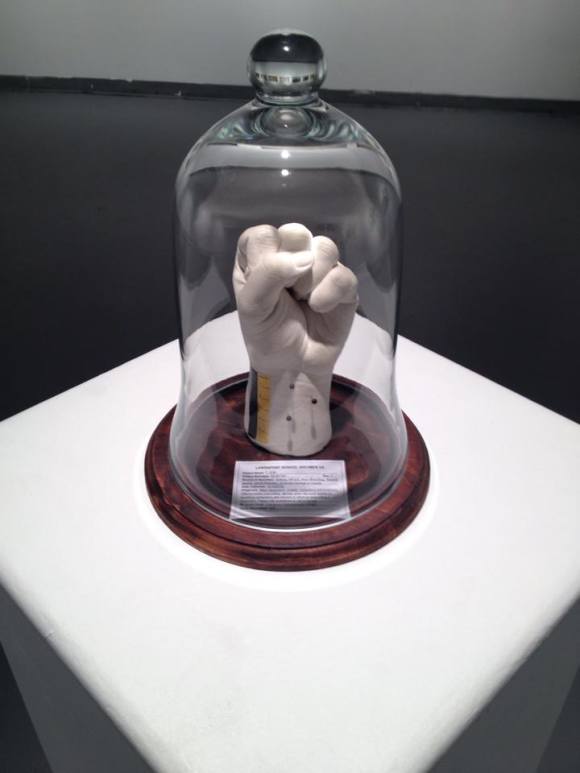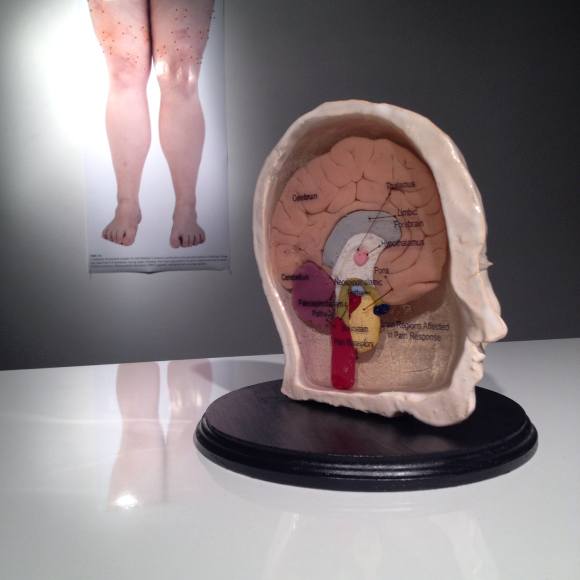Absent Subjectivity: Visual Art and the Critique of Medical Discourse
Rachel Thomas
Rachel M. Thomas is a first year MFA at the University of Calgary, with a specialization in sculpture. Her practice is centred around the medicalized body, with specific focus on compulsive self-mutilation comorbid with depression. Using autoethnography and heuristic research, Thomas seeks to open discourses between the objective medical gaze and the subjective patient experience. Her current body of work discusses the loss of identity through the medical standardization of disease as well as the absence of subjectivity in diagnostic and treatment methods.
Thomas received her Bachelor of Fine Arts (Hon.) degree from York University in Toronto and currently lives and practices in Calgary.
As a first year Master of Fine Arts student at the University of Calgary my sculptural research has become cross-disciplinary with mental health and medicine, particularly when it comes to compulsive self-mutilation. My practice involves careful consideration of research data in new treatments, pharmacological and cognitive therapies, as well as in situ volunteer work at the Calgary Distress Centre. These elements combined have helped me to develop a succinct critical lens with which I am able to explore this phenomenon. As a sufferer of depression comorbid with compulsive self-mutilation tendencies, I hope to elucidate on the subjective processes involved in the disorder through art making. Furthermore, having an integrated approach to my practice may provide medical communities with a way to further understand this disorder.
My most recent series of experimental works entitled Anomaly represent an exploration into the objective gaze of the medical paradigm against patients with mental illness, specifically those suffering from compulsive self-mutilation. The body of work consists of three elements that, while different in media and execution, conceptually touch on pharmacology as a quick-fix treatment method, the purposeful objectivity in medical photography and the use of diagnostic and wunderkammer models (3 dimensional educational objects) to explain wholly subjective and idiosyncratic experiences.
Curiosity (1)

2014. 13’x13’: plaster, glass, pine
Curiosity (1) (Detail)

2014. 13’x13’: plaster, glass, pine
what They tell me it looks like

2015. 12’x12’: ceramic, resin, plastic, pine. *Image in background: Table 1.6. 2015. 24”x48”. Digital Photograph
what They tell me it looks like

2015. 12’x12’: ceramic, resin, plastic, pine. *Image in background: Table 1.6. 2015. 24”x48”. Digital Photograph